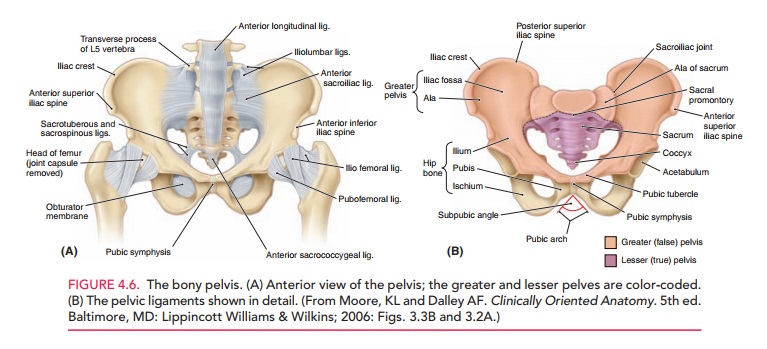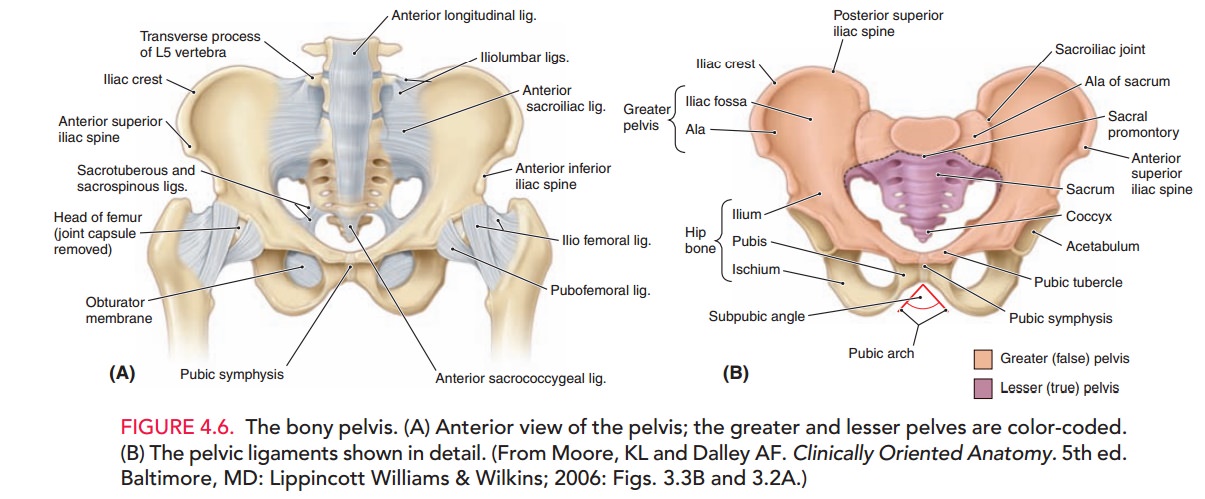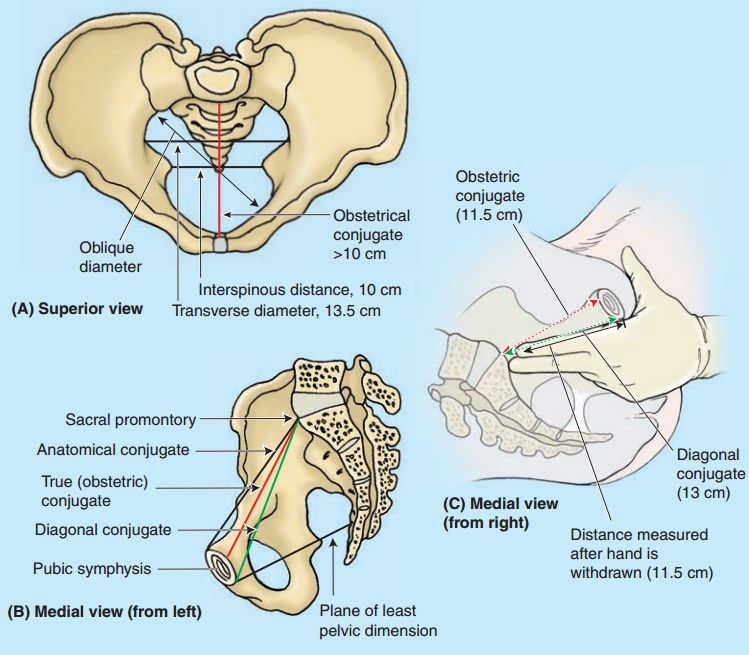Chapter: Obstetrics and Gynecology: Embryology and Anatomy
Anatomy of Bony Pelvis

ANATOMY
Bony Pelvis
The bony pelvis is composed of the paired innominate bones and the sacrum.
The innominate bones are joined anteriorly to form the symphysis pubis, and each is artic-ulated posteriorly with the
sacrum through the sacroiliac joint (Fig. 4.6). The sacrum is composed of five or six sacral vertebrae, which are fused
in adulthood. The sacrum articulates with the coccyx inferiorly and with the
fifth lumbar vertebra superiorly.

In
obstetrics, it is important to assess the size of the pelvis to determine
whether it is of adequate capacity for vaginal birth. This
evaluation is based on the diameters of the pelvic outlet, pelvic inlet, and midpelvis.
Measurement of these diameters is called pelvimetry
and can be made radiograph-ically, with computed tomography (the most accurate
method), or during a pelvic examination. One of the most important measurements
is that of the obstetrical conju-gate (Fig.
4.7), which is the narrowest fixed distance throughwhich the fetal head must
pass during a vaginal delivery.


The
obstetric conjugate cannot be measured directly due to the presence of the
bladder.
It is calculated indirectly by measuring the diagonalconjugate, which is the distance between the lower bor-der of the pubis anteriorly to the lower sacrum at the level of the ischial spines. The obstetric conjugate is 1.5 to 2 cm shorter. In general, it should be 11.0 cm or greater to accommodate a fetal head of normal size. Other measure-ments include the interspinous diameter (the distance between the ischial spines) and transverse diameter (the distance measured at the greatest width of the superior aperture).
The female pelvis may be
classified into four basic types, according to the scheme of Caldwell and Moloy
(Fig. 4.8), although an individual may have a pelvis that is a mixture of
types. The most common type is thegynecoidpelvis,occurring in
approximately 40% to 50% of women. In general,this pelvic shape is
cylindrical and has adequate space along its length and breadth. The anthropoid type occurs in approximately
25% of all women, and the android
pelvis occurs in approximately 20%. The platypelloid
pelvis occurs in only 2% to 5% of women.

Related Topics